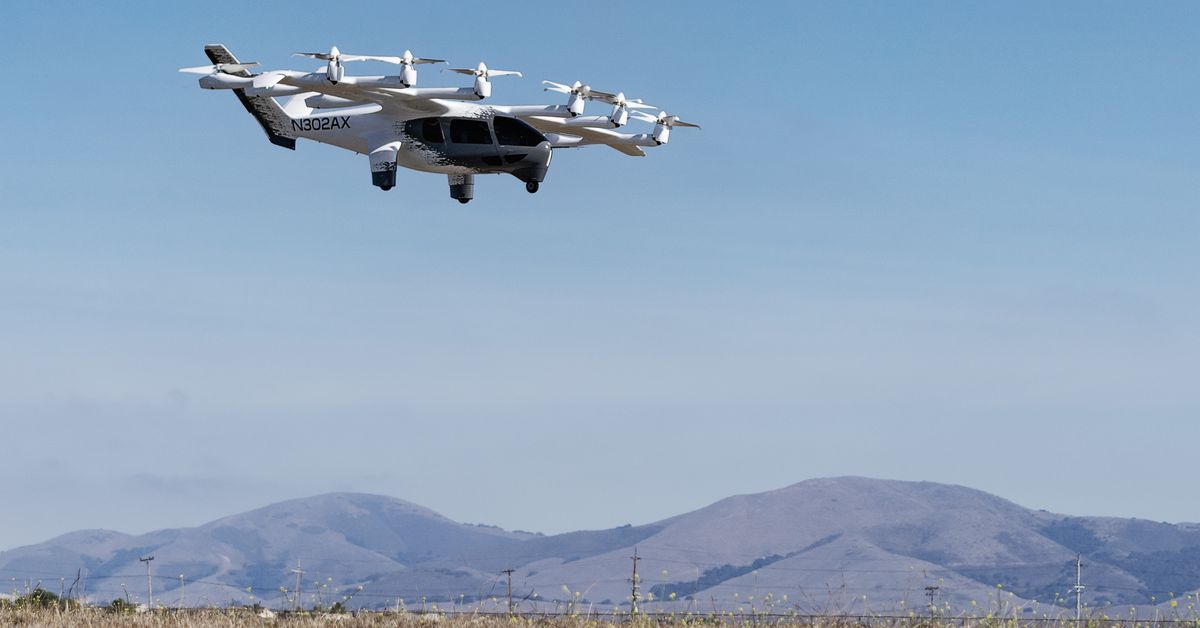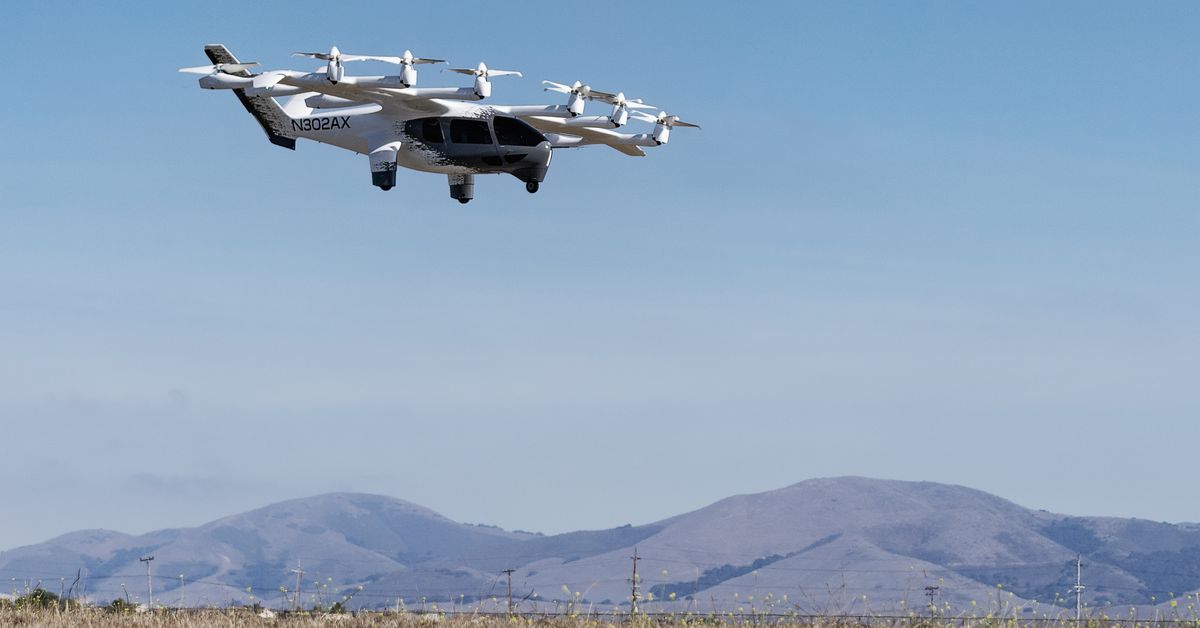Archer Aviation is revolutionizing air travel with its innovative electric vertical takeoff and landing (eVTOL) aircraft. This ambitious company aims to redefine urban transportation, offering a faster, quieter, and more sustainable alternative to traditional methods. Their cutting-edge technology, coupled with a strategic approach to market penetration and regulatory compliance, positions Archer Aviation as a key player in the burgeoning eVTOL industry.
This exploration delves into Archer Aviation’s business model, technological advancements, market position, financial standing, and future prospects.
From its inception, Archer Aviation has focused on developing a safe, efficient, and environmentally friendly eVTOL aircraft. The company’s commitment to innovation is evident in its design, manufacturing, and operational strategies. Archer Aviation faces significant challenges, including regulatory approvals and competition from established aerospace companies and emerging startups. However, the potential rewards are immense, with the possibility of transforming urban mobility and creating a new era of air transportation.
Archer Aviation Company Overview
Archer Aviation is an American electric vertical takeoff and landing (eVTOL) aircraft company aiming to revolutionize urban air mobility. Its business model centers on designing, manufacturing, and operating a fleet of eVTOL aircraft for air taxi services. The core offering is a sustainable and efficient urban transportation solution, promising shorter commute times compared to traditional ground transportation.
Archer Aviation’s Mission and Goals
Archer Aviation’s mission is to create a sustainable and efficient urban air mobility ecosystem. Long-term goals include establishing a widespread network of air taxi routes in major metropolitan areas, achieving significant market share in the eVTOL industry, and becoming a leading innovator in electric aviation technology. This involves not only the development and deployment of their aircraft but also the creation of a robust operational infrastructure to support their air taxi service.
Archer Aviation’s Key Milestones and Achievements
Archer Aviation has achieved several significant milestones since its inception. These include securing substantial funding through various investment rounds, completing successful test flights of its prototype aircraft, and forming key partnerships with established aerospace companies. The company has also made significant progress in obtaining necessary certifications for its aircraft, bringing it closer to commercial operations. A detailed timeline would include specific dates for funding rounds, test flight completions, and partnership announcements, as these are publicly available through the company’s investor relations materials and news releases.
Archer Aviation’s Financial Performance
Financial data for Archer Aviation, being a relatively new public company, is subject to change and should be verified from official financial statements. The following table provides a general representation based on available public information. Note that this data is subject to revision as the company releases further financial reports.
| Year | Revenue (USD) | Expenses (USD) | Profit (USD) |
|---|---|---|---|
| 2023 (estimated) | – | – | – |
| 2024 (projected) | – | – | – |
| 2025 (projected) | – | – | – |
Archer’s Aircraft Technology
Archer’s eVTOL aircraft is designed for urban air mobility, prioritizing safety, efficiency, and sustainability. The aircraft utilizes a distributed electric propulsion system, meaning multiple electric motors power individual rotors, enhancing redundancy and safety. The design incorporates advanced flight control systems and sensor technologies for autonomous flight capabilities.
Technological Specifications and Competitor Comparison
Archer’s aircraft specifications include details on its range, speed, passenger capacity, and battery technology. Comparing Archer’s technology to competitors like Joby Aviation, Vertical Aerospace, and EHang requires a detailed analysis of each company’s aircraft specifications, including battery technology, range, speed, and passenger capacity. A direct comparison would highlight Archer’s strengths and weaknesses relative to its rivals.
Safety Features and Certifications
Archer’s eVTOL aircraft incorporates multiple safety features, including redundant systems, advanced sensors, and robust structural design. The company is actively pursuing necessary certifications from regulatory bodies such as the Federal Aviation Administration (FAA) to ensure its aircraft meets stringent safety standards. The certification process involves rigorous testing and validation to meet all required safety regulations before commercial operations.
Archer eVTOL Aircraft Diagram
A diagram of Archer’s eVTOL aircraft would illustrate its key components: multiple electric motors, rotors, battery system, flight control systems, passenger cabin, and landing gear. Each component would be labeled and described, emphasizing their functionality and contribution to the aircraft’s overall performance and safety. For example, the battery system’s description would include its capacity, energy density, and charging time.
Archer Aviation, a prominent player in the advanced air mobility sector, is constantly innovating. Their focus on efficient and safe electric aircraft design often involves considering the logistical challenges of cargo transport, which is why understanding efficient payload systems like those showcased in the remington drone loads is crucial for Archer’s future planning. This knowledge helps inform their development of infrastructure and operational strategies for their envisioned air taxi network.
The flight control system description would include details on redundancy and fail-safe mechanisms. The rotor design would highlight features that contribute to noise reduction and efficiency.
Market Position and Competition
Archer Aviation operates in a rapidly evolving eVTOL market. Key competitors include Joby Aviation, Vertical Aerospace, and EHang, each with its own unique technological approach and market strategy.
Archer Aviation, a prominent player in the advanced air mobility sector, is constantly innovating. Their work often involves considering payload capacity and efficiency, which naturally leads to exploring compatible solutions like those offered by external providers. For example, understanding the specifics of remington drone loads could inform Archer’s design choices and operational strategies, ultimately enhancing their overall aircraft performance and logistical capabilities.
This type of collaborative approach is key to the continued success of Archer Aviation.
Competitive Landscape Analysis
Archer’s competitive advantages might include its innovative design, strategic partnerships, and progress in regulatory approvals. Disadvantages could involve challenges in scaling production, securing sufficient funding, and navigating the complex regulatory landscape. The current market demand for eVTOL aircraft is projected to grow significantly as urban populations increase and the need for efficient transportation solutions becomes more pressing. However, factors such as infrastructure development, public acceptance, and regulatory approvals will significantly impact market growth.
Competitive Landscape Table
| Company Name | Aircraft Model | Key Features | Market Share (Estimated) |
|---|---|---|---|
| Archer Aviation | Maker | Electric propulsion, autonomous flight capabilities | – |
| Joby Aviation | S4 | High speed, long range | – |
| Vertical Aerospace | VAX-4 | Multiple passenger capacity | – |
| EHang | EH216 | Autonomous flight, passenger transport | – |
Investment and Funding
Archer Aviation has secured funding through a combination of venture capital investments and public offerings. This funding fuels research and development, marketing efforts, and operational expenses.
Funding Sources and Spending Breakdown

Archer Aviation’s funding rounds have involved significant investments from various venture capital firms and strategic partners. A breakdown of spending would show allocation across R&D (a significant portion), marketing and sales, operations, and administrative costs. The exact figures would be available in the company’s financial reports.
Financial Risks and Opportunities
Potential risks include competition, regulatory hurdles, and challenges in scaling production. Opportunities lie in the growing demand for urban air mobility, technological advancements, and strategic partnerships.
Archer Aviation’s Funding Timeline
- [Insert Date]: [Insert Funding Round Details – e.g., Series A funding round, amount raised, investors]
- [Insert Date]: [Insert Funding Round Details]
- [Insert Date]: [Insert Funding Round Details]
- [Insert Date]: [Insert Funding Round Details]
Regulatory Landscape and Future Outlook
The regulatory landscape for eVTOL aircraft is complex and evolving. Archer Aviation faces challenges in obtaining necessary certifications and complying with safety regulations.
Regulatory Hurdles and Government Policy Impact
Securing FAA certification is a crucial step for Archer Aviation. Government policies regarding airspace management, safety standards, and environmental regulations will significantly impact the company’s future growth. Favorable policies could accelerate market entry and adoption, while stringent regulations could create delays and increase costs.
Long-Term Prospects and Future Applications
The long-term prospects for the eVTOL industry are positive, driven by increasing urbanization and demand for efficient transportation. Archer Aviation’s technology could find applications beyond air taxis, such as cargo delivery, emergency medical services, and tourism.
Public Perception and Brand Image: Archer Aviation

Archer Aviation’s brand identity is built around innovation, sustainability, and safety. The company actively manages its public image through strategic communication and marketing efforts.
Media Coverage and Public Relations Strategies

Media coverage of Archer Aviation varies, with both positive and negative stories appearing in various outlets. Archer employs a multifaceted public relations strategy, including press releases, media outreach, and social media engagement.
Improving Brand Image and Public Perception
To further enhance its brand image, Archer Aviation could focus on transparency, proactive communication, and consistent messaging. Demonstrating its commitment to safety and sustainability through verifiable data and initiatives would further bolster public trust and acceptance.
Archer Aviation’s journey to commercialize its eVTOL aircraft is a testament to the potential of disruptive technology and the dedication of its team. While challenges remain in navigating the regulatory landscape and competing in a rapidly evolving market, the company’s innovative spirit and strategic partnerships position it for future success. The potential for widespread adoption of eVTOL technology is substantial, and Archer Aviation is well-placed to capitalize on this opportunity, ultimately shaping the future of urban air mobility.
Question & Answer Hub
What is the estimated price of an Archer eVTOL aircraft?
The exact pricing hasn’t been publicly released, but industry analysts predict a high cost, reflecting the advanced technology involved.
When will Archer Aviation’s eVTOL aircraft be commercially available?
Archer Aviation has announced target dates, but the actual launch depends on regulatory approvals and successful completion of testing.
What are the maintenance requirements for Archer’s eVTOL aircraft?
Detailed maintenance procedures are proprietary, but the company emphasizes ease of maintenance and reduced downtime compared to traditional helicopters.
Does Archer Aviation offer any pilot training programs?
Specific pilot training programs are likely to be developed in collaboration with flight schools and training organizations as the aircraft nears commercial availability.
